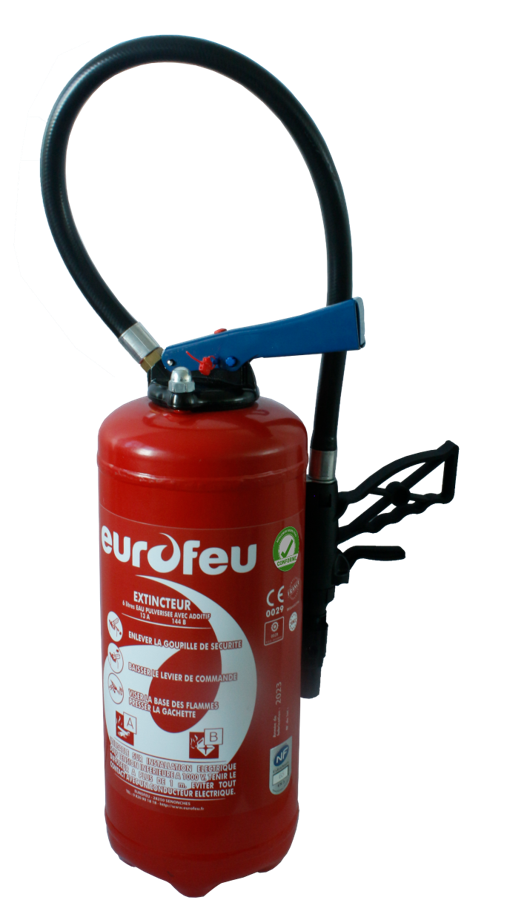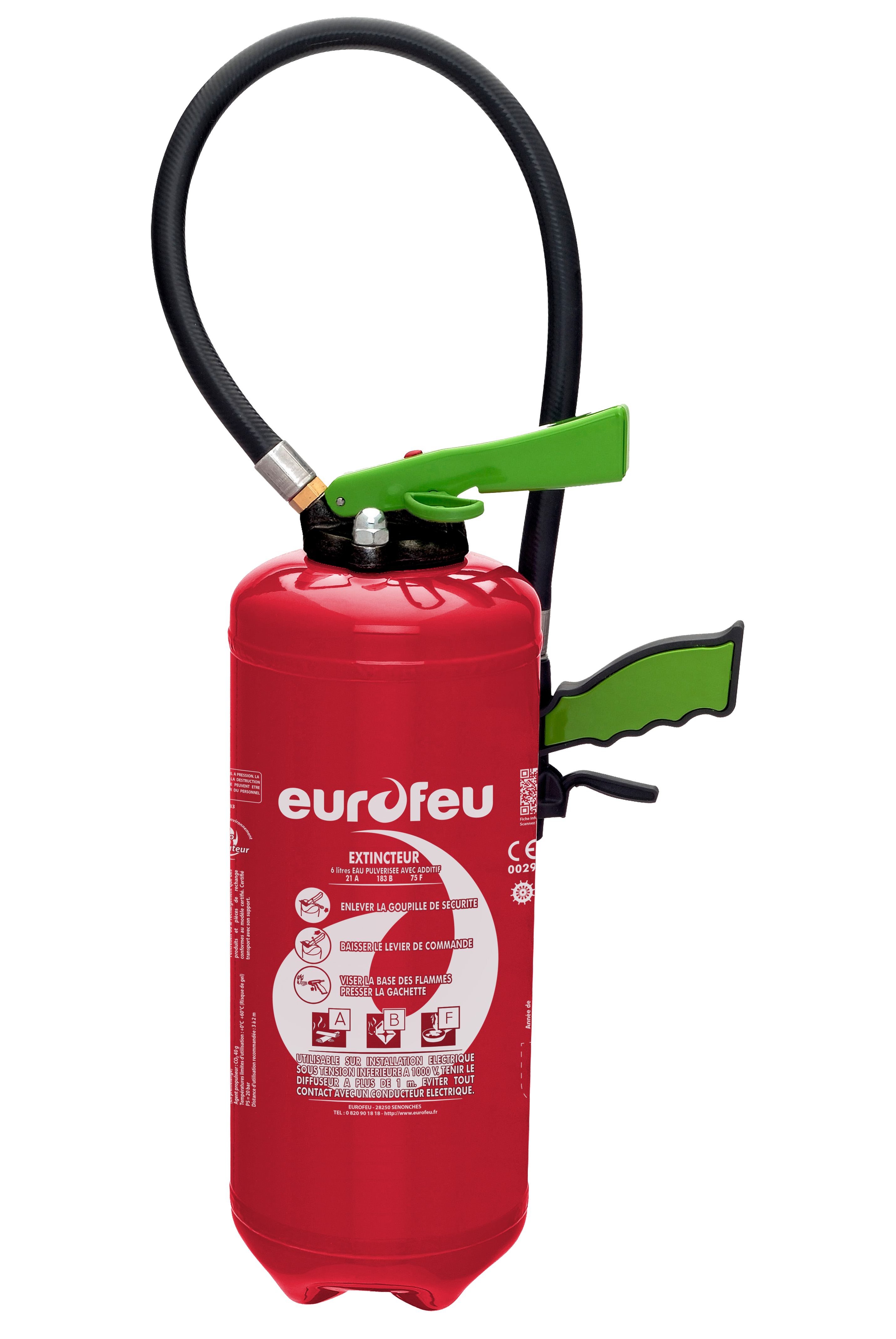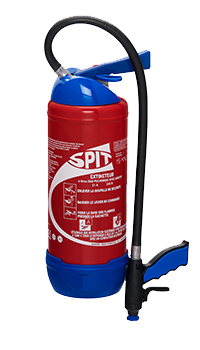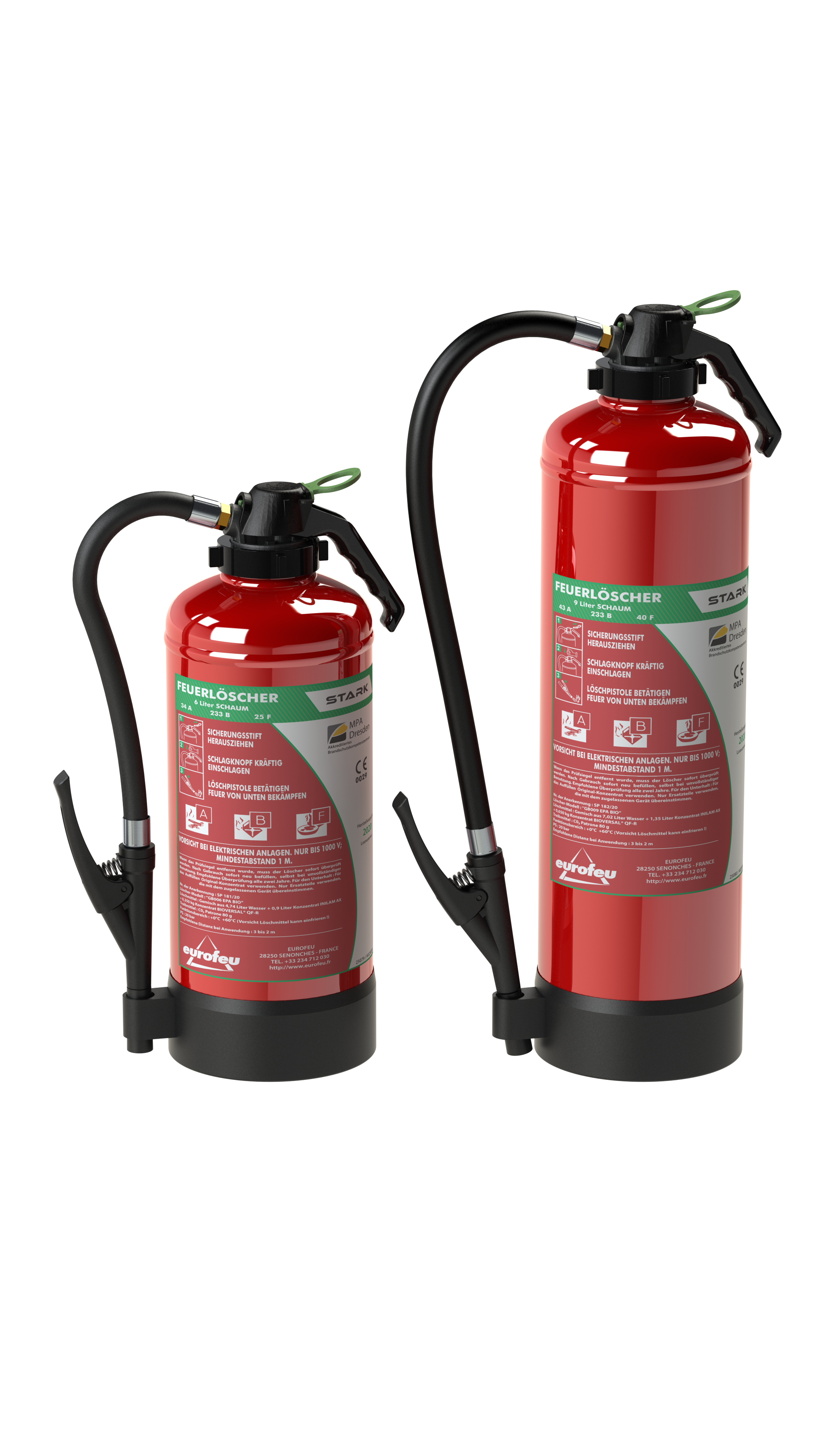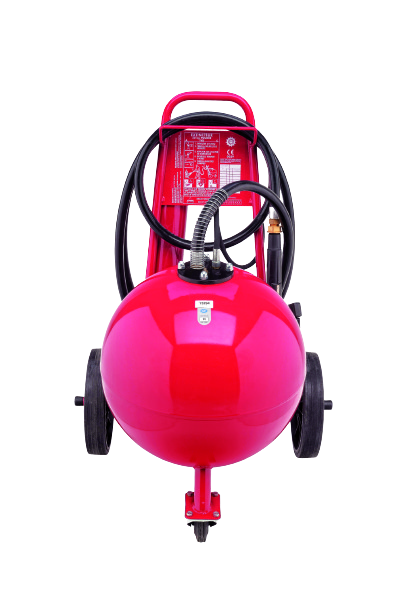Fire extinguishers
green
Fire extinguishers
SPIT
Fire extinguishers
NEODIS
Fire extinguishers
STARK
Fire extinguishers
EUREXTREM
Fire extinguishers
PERFEX II
Fire extinguishers
CO2
Equipment
on wheels
Fire extinguishers
automatic
Other
extinguishers
Water extinguishers with additives (EPA)
Eurofeu meets all your needs in terms of environment and long-term use
Sturdiness, performance
Lightness, aesthetics
Since 1981, the Eurofeu Group has been manufacturing a complete range of "Origine France Garantie" permanent and auxiliary pressure extinguishers to cover all the risks encountered, whatever your customer's activity. Stand out from the crowd! Discover our ranges and services.
These extinguishers use water spray as the extinguishing agent, and act by cooling Class A fires as fine droplets of water vaporize on contact with the fire, absorbing the heat released.
With the addition of additives, these devices become water spray extinguishers with additives (EPA) and can thus act by smothering Class B fires, thanks to the formation of a floating film that isolates fuel vapors and oxygen from the air.
With an operating temperature range of between 5°C and 60°C, water-spray extinguishers are not suitable for outdoor use. However, by adding antifreeze to the water, this temperature range can be increased from -10°C to 60°C.
The most widespread type of additive is AFFF (floating film-forming agent) technology. However, with new environmental regulations, these additives are gradually being replaced by fluorine-free technologies (PFAS).
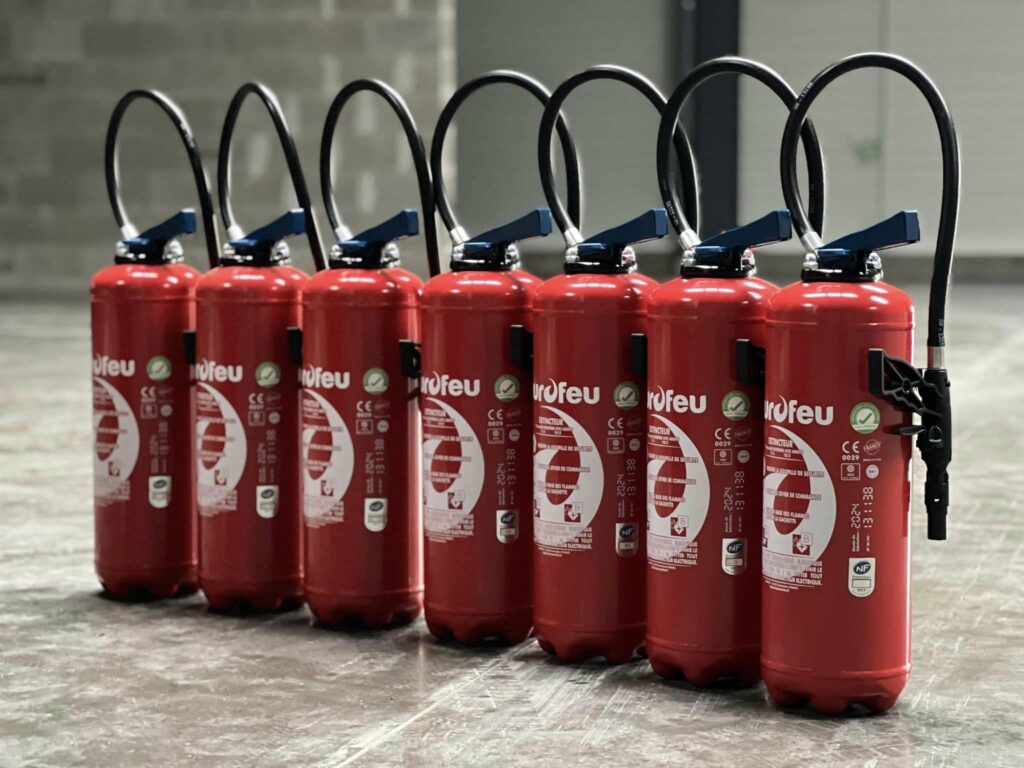
You need personalized support
Our teams are at your disposal to answer any questions you may have.
How a water extinguisher works
A water-spray extinguisher with or without additives consists of the following components:

Mounted head, hose and propellant
A cylindrical body
A mounted head that closes the unit
- The handle to hold the device and activate the firing pin (on auxiliary pressure) and to activate the extinguisher (on permanent pressure),
- A firing pin on an auxiliary pressure,
- A dip tube,
- Control and safety devices (seals, pin, percussion indicator, pressure gauge for permanent pressure, etc.),
- For water-spray extinguishers with additives, one dose of additive in a container or premixed in water,
A hose and propellant
- A hose equipped with a diffuser and a lance for guiding and emptying the device,
- The propellant gas cartridge (often carbon dioxide) for auxiliary pressure.
A cylindrical body
- Metal and filled with water.
The device operates mechanically: the percussion of the gas cartridge pushes the water into the dip tube. The additive is often mixed with the water at this point. Activating the extinguishing handle sprays this pressurized water through the lance and nozzle onto the fire to be extinguished.
Fire attack distance varies between 3 and 2 meters for a water spray extinguisher and between 4 and 3 meters for a water spray extinguisher with additive.
When it comes to fighting fires, the first few seconds are the most important.
"The fire goes out in the first minute with a glass of water, in the second minute with a bucket of water, in the third minute with a tank of water, after that...you do what you can..."
So it's crucial to have the right reflexes for the type of fire and the extinguisher to be used.
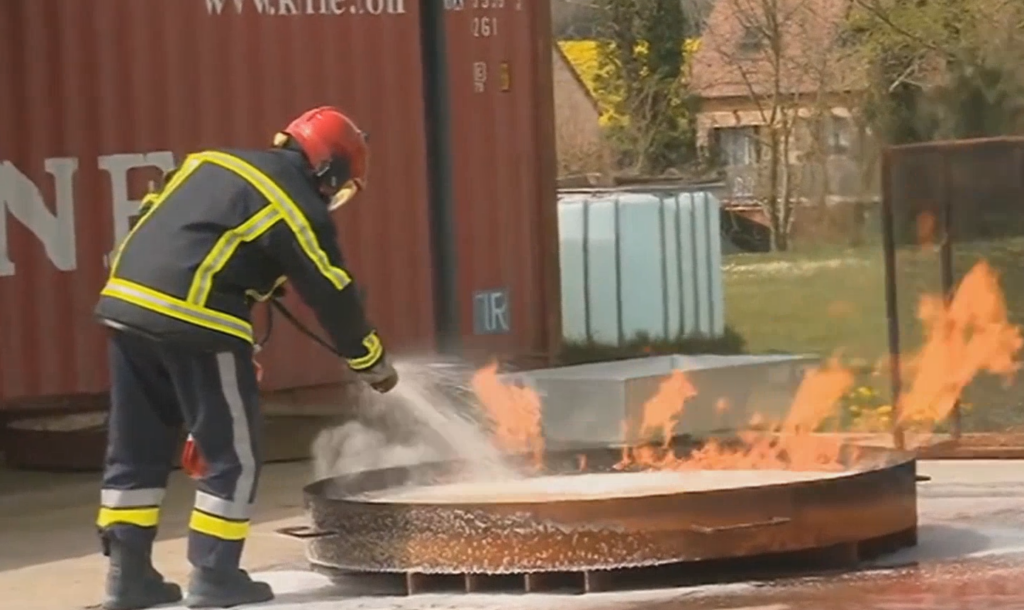
When should you use a water extinguisher?
What type of fire can a water extinguisher extinguish?
To find out more about fire types and how to extinguish a fire, consult our fire class summary table.
A water-spray extinguisher can extinguish a Class A fire (wood, fabrics, paper, plastics, cardboard, etc.) by cooling.
A water spray extinguisher with additive can extinguish class A and B fires (Hydrocarbons, Solvents, Gasoline, Alcohols, Greases, Oils, Paints...) by cooling (with a superior wetting effect) and smothering the flames by creating an insulating floating film.
Thanks to its unique technical and safety properties, our water-spray extinguisher with vegetable additive can be used on fires A, B and F (use of a cooking aid in conjunction with vegetable or animal oil).
Water or powder extinguisher?
Powder extinguishers are highly effective on Class A, B and C fires. However, powder extinguishers are corrosive, very messy, reduce visibility during intervention and damage electrical and electronic equipment. Water-based extinguishers are therefore preferable where cleanliness and environmental integrity are important.
Which premises should be equipped with a water extinguisher?
Water extinguishers are preferred in the following environments:
Offices, shops, restaurants, homes, hotels, warehouses without particularly flammable materials.
Our water-spray extinguishers with plant additives can be used in a wider range of environments than conventional AFFFs: kitchens (class F), hospitals, food processing, schools, cold rooms (suitable for positive cold from 0°C to 5°C)...
For extreme environments, Eurofeu has developed an adapted range of devices: coastal areas, oil rigs, medical equipment, etc.
Need help?
Contact our teams for a precise diagnosis.
Application locations
Eurofeu designs and manufactures water extinguishers with
or additive-free using the most advanced additives and technologies.

A complete range of auxiliary and permanent pressure water extinguishers
Small water extinguishers
Portable water extinguishers
Mobile water extinguishers on wheels
Innovative fire extinguisher models
Read our other articles here! :



